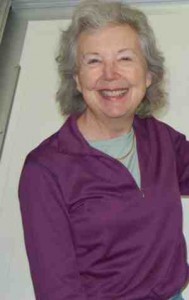Letter from Virginia McConnell Simmons
Colorado Central – July 2007 – Colorado Central Magazine
Dear Editors:
The short article “Colonel Pfeiffer’s Grave” by Marcia Darnell, who is ordinarily a responsible writer, has rendered me amazed but not speechless. The header, “Not Exactly a Roadside Attraction” should have been “Not Exactly an Accurate Article.” I respond herewith, not to honor Pfeiffer but to bury the article along with its errors. Most but not all of these are trifles when compared to weightier matters in today’s world, but I value the writing of history as a discipline requiring accuracy and honesty to the best of one’s ability.
The most egregious mistake is Darnell’s statement that “injury kept him from joining in the Navajo Campaign, which forced the tribe onto a reservation near Ft. Sumner, New Mexico.” On the contrary, Pfeiffer actively participated in the infamous Navajo Campaign. Under orders from General James H. Carleton, Colonel Kit Carson commanded the campaign in which Captain Albert H. Pfeiffer led one of two military units into Canyon de Chelly and afterward conducted the Navajos on their Long Walk to Bosque Redondo. This involvement is well documented and well known despite denials by some residents in the San Luis Valley, where loyal descendants still live.
As an instance of a less important error, Pfeiffer was not “born in the Netherlands,” but in Germany. His German home was in East Friesland, which long years before had been part of the Netherlands, indeed, but not in 1822.
He emigrated to America in 1844, but he did many things for a decade and a half before he “became a Ute Indian agent in Abiquiu, New Mexico.” (New Mexicans spell that place as “Abiquiù,” with an accent mark, by the way.) Having written quite a bit about Pfeiffer’s activities there for two books, I am mystified about the “food shortages” and “refugees” he supposedly dealt with at Abiquiù. Yes, there was a very serious problem with raiders (often Navajos but also Utes and Hispaños) who stole livestock and took Indians captive during the thriving slave trade. Some of the captives lived and worked in the household of Pfeiffer, Carson, and innumerable other respected people. You might use the terms captives, servants, slaves, or criados, but by no stretch of the imagination were they “refugees.”
“Upon his retirement,” as Darnell says, Pfeiffer did move to the San Luis Valley, I imagine to be near his old friend and adviser Kit Carson, who was commandant at Fort Garland in 1866-1867. Primarily moving around in Costilla and Conejos counties, Pfeiffer seems to have established no permanent home until he homesteaded west of present-day Del Norte a few years later in the early 1870s, not “in 1866.” One of his associates in a cattle and/or sheep operation there was Christian Stollsteimer, who Darnell says also “had been a Ute Indian agent.” Christy was not the agent for Southern Utes until the 1880s, after Pfeiffer had died.
Abetting the livestock operation, Pfeiffer helped his associates gain permission to graze their animals on Ute land southwest of Pagosa Springs. In contrast to his relations with Navajos, who had been just about everyone’s enemy for generations, Pfeiffer had always gotten along well with the Utes.
A legend about a fight he had with a Navajo near Pagosa Springs to win possession of the “land” in “1872” for the Utes (or the springs, depending on the source) may or may not be apocryphal. At any rate, if it occurred at all, it most likely took place before “1872,” as the Navajos were pretty well corralled by then and not out looking for trouble at Pagosa Springs.
Last, and perhaps least, Pfeiffer’s grave is not “on the land he homesteaded.” He was buried on the homestead of his neighbor, John Gredig, to the west of Pfeiffer’s homestead, maybe because it had a view that Pfeiffer admired or because of financial problems involving Pfeiffer’s land. Who knows? Years later, the Gredig family donated the site to the D.A.R.
Despite all these nitpicking quibbles, the grave of Albert Pfeiffer may not be a major “roadside attraction” in Darnell’s opinion, but it provides a nice little outing. The county road has a pullout to facilitate safe parking, and the view from the gravesite toward the South San Juan Mountains is stunning.
Virginia McConnell Simmons
Del Norte

